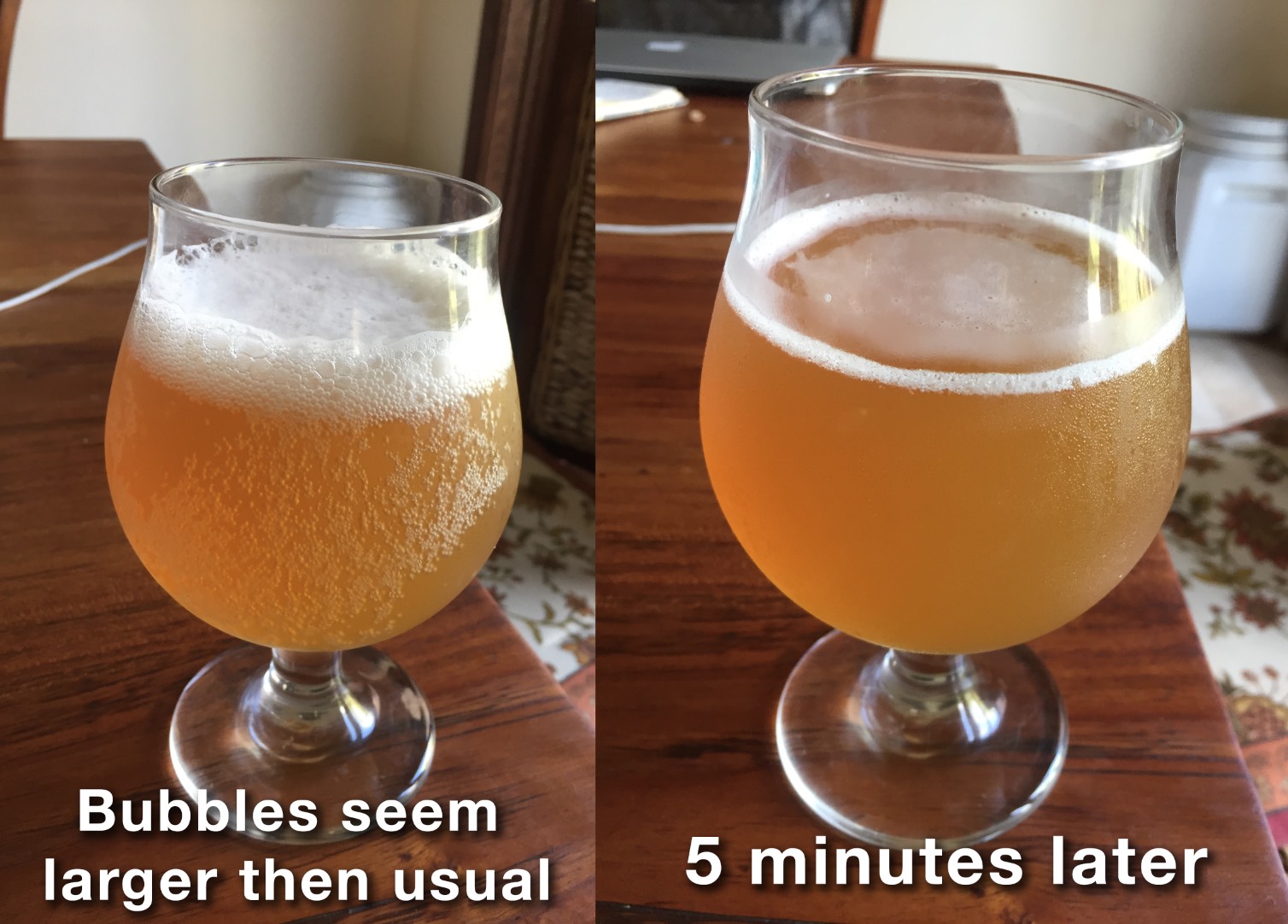ca_baracus
Well-Known Member
- Joined
- Jun 15, 2017
- Messages
- 109
- Reaction score
- 25
Interesting! Let us know how it works for you.I just hooked up my new cold crash guardian today! Thanks Bobby!
https://www.brewhardware.com/product_p/ccguardianv2.htm

Interesting! Let us know how it works for you.I just hooked up my new cold crash guardian today! Thanks Bobby!
https://www.brewhardware.com/product_p/ccguardianv2.htm
Lastest NEIPA. My 1st try a few days ago disappointed me. 1 week bottled now and no diacetyl nor oxygenation. Not a substantial amount of flavor but ill take it. Left is a Pinthouse Pizza DIPA. Right is mine.
[ATTACH
My PM version. For dry hopping 3/4 at day 3 fermentaion and 1/4 keg hops. View attachment 584808View attachment 584809
If you haven't had EJ for a couple years and if the batch is fresh, get ready to be Wow'ed! They've modified the recipe, incorporated lupilin powder and have it down now. Good tasting!Hey PM, how did you come up with the Electric Jellyfish recipe? I was in Austin last weekend and stopped in to get a crowler. Haven't had it for a couple of years so looking forward to cracking open that bad boy soon. Have you been to Hi Sign yet? Their Hi-C NEIPA was pretty solid. Especially the aroma which may have been better than the taste.
Sorry for the absence. It has been hectic with life around my house.
I got the beer bottled. I ended up going:
Primary to
Bottling bucket to
Bottle.
I used 'Grolsch' style bottles with the bails. That went quite well.
When I transferred to the bottling bucket, the amount of hops in the bottom of the primary fermenting bucket was crazy. I can imagine there is some sort of work around to this but I am not aware of it yet. I estimate about 5 liters loss total, which I find quite high, but I have no frame of reference so that could be normal.
I bought some drops to carbonate, that was super easy. I may use these more often!
I purged the bottles with some co2 gas I found in a nifty can made for wine drinkers, that was also pretty cool. The filling went smoothly too.
The hop aroma was out of this world! The room really became saturated with the hops from the beer. It should be carbonated up soon and I will be able to try it out. I have an idea what I am going for in terms of flavor so hopefully this puts me in the right direction.
I will be sure to report back with a tasting and glass photo. I am not planning on brewing again until late September, when the temperatures drop back down again. It has been crazy hot in Switzerland, one of the hottest summers in the last 11 years. My normally stable cellar temperature even raised up 3 degrees.
The next time I am going to try using cryo hops to cut down on waste and look into using something to see if I can further reduce waste. I ended up with about 15 usable liters, which translated to roughly 46 33cl bottles of beer. the plan is to split it three ways with my partners.
I also have some money earmarked for gear purchases too. new boil kettles and a conical fermenter.
A big, big thanks to everyone who helped me through this! Onward and upward!


















Depends on how quick your quickly is. Mine is mostly gone after drinking 2/3rds of the pint so maybe 3-4 minutes? No proven idea how to extend it.great recipe... Only thing I notice is the "head" does not last... Been sitting on 12psi for the past couple weeks and produces a full head on each pour but quickly diminishes.
Anyone else seeing this?
How much?I have been adding Carahell lately which has improved head retention.
20 minutes rest at 164-167 should help. Also check your pH...if it's too low that will kill head

Looking at my recipe I did 2-row (53.8), Munich(38.5), Carahell(7.7).How much?


great recipe... Only thing I notice is the "head" does not last... Been sitting on 12psi for the past couple weeks and produces a full head on each pour but quickly diminishes.
Anyone else seeing this?
has anyone had this issue, when pulled from the keg the beer looks slightly oxidised, but then after 10 mins changes to a brighter orange?
Except when you lines hold 14oz, hurts to dumpIt is oxidizing in the draft lines, just dump the first couple ounces on first pour of the day. Happens to me too, just small change in pouring process cured it.
Basement kegerator, taps in dining room, 27ft of 1/4" barrier tubing.Why are your lines so long?
Yup that is what I use, just 1/4 and eaton brand. Take two to three weeks to really notice the oxidation, I try to work the taps more often than that. Also the right temp range on the glycol helps,. Was using larger swings and it accelerated thebprocess and lost carb faster.
The reason for the bubbles on the left is because the glass is dirty (maybe not something you can see, but it has dust or soap or something). When bubbles accumulate on the sides it is because the glass needed to be cleaned/rinsed better. That might also play a role in the head retention.I'll have to get a PH Meter but this is the first beer I have noticed the head leaves so fast.
I did substitute Carapils in place of flaked Barley but that should not have effected
head retention...

The reason for the bubbles on the left is because the glass is dirty (maybe not something you can see, but it has dust or soap or something). When bubbles accumulate on the sides it is because the glass needed to be cleaned/rinsed better. That might also play a role in the head retention.
